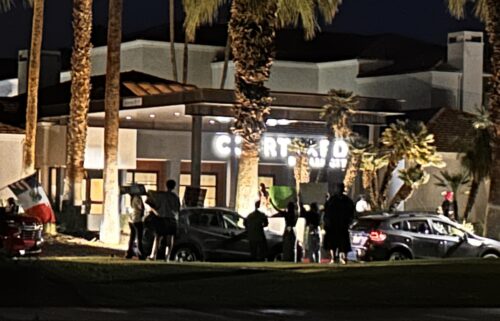Mammogram Guidelines Create Stir With Patients & Doctors
LA QUINTA – Dr. Phillip Bretz is the lead researcher at the Desert Breast Institute in La Quinta. He calls this confusion over new mammogram guidelines “a debacle.” But he’s going one step further, developing a non-invasive way to detect breast cancer.
We also asked one Palm Springs breast cancer survivor what would have happened to her under these controversial new mammogram guidelines.
“I would not have survived to raise my children.,” says Lorraine Webel.
“The doctor said I would not have survived for another mammogram. Had the guidelines been in place then, I would not have had that first mammogram at 42 years old that I had,” Webel adds.
Lorraine Webel of Palm Springs had no family history of cancer. She found a lump with a breast self exam in 1996. She went immediately to her doctor for a mammogram. It was malignant cancer. Now, she fears the new guidelines calling for less frequent breast exams may cost more lives.
“I believe totally that insurance companies are going to jump off the bandwagon and say if the guidelines are in place, that we’re not going to spend the money on mammograms. And if there’s a mammogram that comes up questionable, we’re not going to spend the money on ultrasound, MRI or needle biopsy,” say Webel.
Doctor Phillip Bretz of the Desert Breast Institute says new research indicates some women should get mammograms far earlier than at age 50.
“It’s the biggest study on African American women. One of the results was, that if they implemented that, was to have mammography for African American girls starting at age 30 because they presented by age 33.” explains Dr. Bretz.
Dr. Bretz is a pioneer in using modified military infrared with artificial intelligence to detect ultra small breast cancer.
He’s presenting his infrared cancer detector, the only one of his kind in California, to doctors around the country. He recently posted a study with over 500 test patients. Dr. Bretz hopes his patients will spur local political leaders into taking action.
“I want them to call Mary Bono’s office and ask Mary to sit down with us and see if we can get a congressional hearing and invite the genetics community, people from Cornell that are researching infrared along with me,” says Dr. Bretz.



